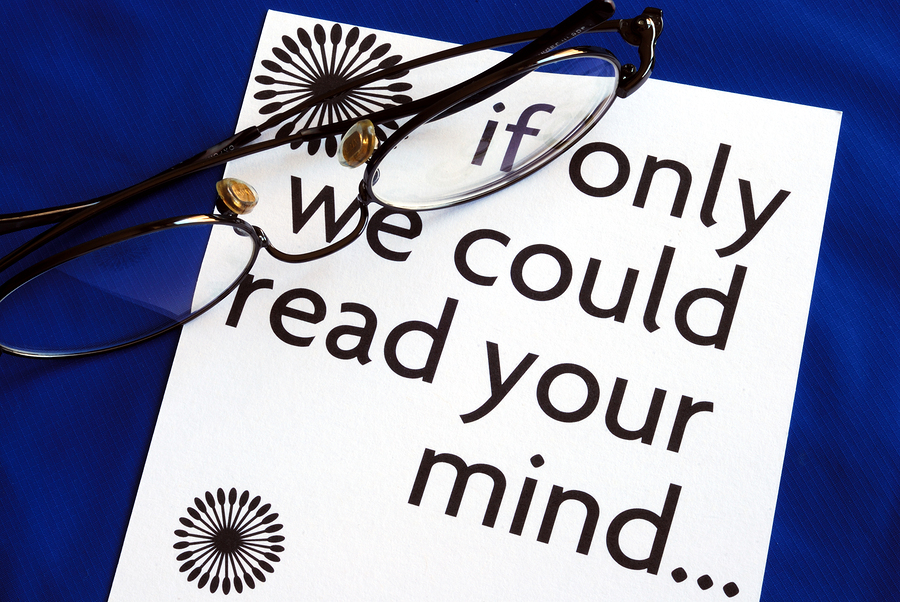I have the privilege of reading for a living. Someone once asked “What do you do for a living?” I replied, “I read.” Then they asked what I did for fun. And I replied with a huge smile, “I read.”
But not all reading is alike. There is immersive reading of a technical nature. There is escapist reading of a great thriller. And there is cursory reading where you are “browsing.”
It is this last technique I learned as a bookseller, a billion years ago. I’ll never forget a customer in our bookstore asking me, “Have you read every book in here?” I gazed at the 10,000 titles on our shelves and said, “Unfortunately we are sort of out numbered.”
So how do agents and editors read so much? Is it speed reading of the Evelyn Wood sort? At least not for me it isn’t. It is more the ability to read “at” a book or a proposal and grasp the essence of its purpose. It is also one of the reasons an editor or an agent requires a synopsis (for a novel) or a chapter by chapter analysis (for non-fiction) in the proposal. Allows us to grasp the big picture much easier.
But the title of this blog promises some ideas on how to do this and expand your own abilities. I suspect many already do a form of this. And if you have more to add, please tell us your secret in the comments below.
Disclaimer: I understand that the concept of “not really reading” a book is tantamount to heresy among those of us who love books and love reading. This is not a substitute for really reading any book in its entirety. It is a method for absorbing the essence of hundreds, if not thousands, of books in a short period of time.
1) Back cover copy or book jacket flap copy. While the author probably didn’t write it, someone with knowledge of the big ideas in the book did. There is an art to writing good cover copy. Reading this is usually enough to give me the essence of what the book is about. Sometimes even enough to feel like I’ve read the book when I haven’t!
2) Table of Contents. For non-fiction this can be very instructive. It is meaningless in fiction, in my opinion. It is here where you can often find the structure of the book. And depending on how detailed it gets I can go to a specific spot in the book and read enough to know what the author is trying to say.
2a) The Index and/or the Bibliography. If there is one or both in a non-fiction book this shows the research and the breadth of the material. Sometimes a quick glance here can expose a depth that was not apparent from the back cover copy. It can also reveal whether or not the author is from a particular tradition theologically. If every book cited is Baptist, or Pentecostal, or by a Chicago Cub fan (?) you can get an idea where this writer is coming from.
3) The Introduction and the first chapter. Or, better yet, the first 10-20 pages of any book. In five to ten minutes one can grasp style, pace, intent, and more in those first few pages. This works for fiction or non-fiction. If you read books and proposals this way, like I have for the last 30+ years, the best books rise to the top very rapidly. If you have to process a slush pile of unsolicited proposals, this is the only way to survive looking at 1,000 or more ideas each year.
I appreciate the “Look Inside” feature on Amazon.com. So often these first three exercises can be accomplished online and widen your search. (Having the “buy” button so close to the “Look Inside” feature is borderline evil.)
3a) If the book is a daily devotional or daily reader of some sort? The trick I use is to read today’s entry. Then read the entry for my birthday. And then read the entry for my wife’s birthday. In seconds you have sampled, at random, the entire devotional. Try it with any of the devotional books you have on your shelf at home. It is a fun way to “test” a book.
4) If you’ve done #3 above, now read the first paragraph in each successive chapter in the book. Again, it allows you to browse through the whole and catch the high points.
You might say this doesn’t work for fiction and you might be right. It actually can ruin a great novel because you didn’t really read it. I understand and agree. At the same time there are many books I really have no desire to read but I do want to know enough about it so if referenced in a conversation or a review or a proposal I have at least a passing knowledge. This may chap some of you, but I didn’t want to read The Help by Kathryn Stockett when it hit the bestseller list in 2009. So I sampled it as described. And read a couple reviews. It was enough for me to know its quality, style, storytelling, etc. Now, if it had been set on Mars or on a Space Station in a galaxy far away and there were aliens, I might have read the whole thing… !!!
With over 300,000 new books being published annually we are all deluged by endless choices. Each year there are at least 200 great new books of fiction or non-fiction that are declared must-reads by someone I know or trust. Believe it or not I actually do read hundreds of books each year. But since I’m in the business of reading I have to find a way to “read” more.



 Name Brands in Fiction
Name Brands in Fiction

Steve, thanks for the post. Very helpful ideas.
With a growing mountain of books and journals at my bedside I need all the help I can get.
O Readers’ Digest, where art thy Condensed Books in this, our hour of need!
Wherefore didst thou put an end to this boon?
Did we fail to pay thee meet adoration, or were our monetary offerings insufficient for thine own needs?
Pray return to thy palace of literary brevity, and open wide the gates!
I subscribed to the Readers Digest condensed book service for a few years as a way to sample many of the popular novels that were on the market. I found the experience unsatisfying on a regular basis. If I was intrigued enough to want to read the story described the abridged version lacked depth.
I made the mistake of “reading” a classic novel on audio, in an abridged version. A 20 hour novel was condensed into two hours. It basically read like this “Meet so-and-so. And he died. Meet she-and-so. And she died.” Over and over again. Felt like reading an obituary. After a while it became comical.
That’s so true – i used the condensed books to gain a bit of familiarity with those titles which were popular at the time, but only if I was sure I didn’t want to read them in their entirety.
One excellent example of a book that simply couldn’t be condensed was Richard Bach’s first title, “Stranger to the Ground”; it’s a lovely, meditative work on the interweaving of life and flight for a young fighter pilot during the Cuban Missile Crisis. When condensed, it became a sit-on-an-old-gas-drum-outside-the-hangar flying yarn.
The first thing I usually do when choosing a nonfiction Christian book to read (before following your course, Steve) is to check the name of the publisher. This gives me a fix on the theological bent of the work–or, at least, it used to. It seems so many publishers that used to be theologically conservative have opened up to a wider range of thought. Not that I oppose this, but it confuses my usual system.
That is a good idea for another post. The theological background of a publisher can be suggestive. But few know the background of a publisher. I’ve done it as an exercise in writing classes. But as time goes by the lines have blurred. A publisher may have started out in one tradition, but after management or ownership changes that legacy is not longer relevant.
Most publishers that “were” conservative, still are. But the definition of “conservative” can change from reader to reader!
Steve
I’m a book sampler/scanner from way back! So glad to know others take a similar approach. Life’s too short to spend reading bad books (or good books that simply aren’t to my taste) unless there’s something to learn from them. As an author I want to know *about* 50 Shades and why it’s shaking up the publishing world, but I certainly don’t want to read it.
I found this post fascinating. It has focused my attention on additional locations in a manuscript to make sure the emotional hook is extra strong. When Albert and I made the 3-column, pocket-Bible-sized font, 4-page index for our engineering monograph, we tried to include everything we thought someone might be trying to locate, but I never realized it might drive a decision to buy or not.
I like your guide for selecting devotionals. When I was buying children’s Bibles/Bible storybooks for my kids, I always looked to see how they handled the expulsion from the garden, the flood, and the crucifixion to see if the theology was sound. One of the most amazing was The Rhyme Bible, where every story is translated into rhyme while retaining theological accuracy. It was my daughter’s favorite from the Easter she got it in first grade. She memorized many of the poems and can still recite them even though she’s 20 now. I buy copies to give as baby presents.
I chose to open this blog and read in answer to the continual call of my addiction….aka….so many books, so little time…and in truth, what you’ve described (at least in my non-expert opinion) is a great way to “audition” the titles I continually list under the header in my journal, “Books to read in 2015″….admittedly some of which were written in the late 1800’s….lol….thanks for the tip! I’m going to give auditioning a whirl!
Steve, very pertinent post! Reading, or lack thereof, is enough to make an informed and intelligent person weep for what is lost. I have been involved in government hearings (as a concerned citizen) regarding important legislation with citizens freedoms hanging in the balance. By law a transcript is made of these proceedings so what actually happened or was said is “of record”. Many times a FOIA (freedom of information act) request must be filed in order to obtain the information.
The problem arises when the same government agency distills the proceedings down to a “summary” and then spoon feeds it to an unaware public. These “summaries” rarely reflect the gravity of what actually occurred. They are, many times, a glossed over version of a warm and fuzzy concept proclaiming “to benefit the people”. The resultant truth is less power to the people and more control for the bureaucrats. This constant chipping away at our freedoms is like water drip torture.
I have then read newspaper accounts of the proceedings and they were nothing like what actually happened. On more than one occasion I have contacted reporters and told their their story was total fiction. I asked them “were you even there” and have been told no, they admitted they wrote their story based on what the government entity gave them.
This has become so commonplace and the politicians are so comfortable doing this now with no fear of repercussion from an enraged public that we have actually witnessed legislators signing into law legislation that they haven’t even read. They are too lazy, too obtuse or simply rote automatons of their particular party to actually uphold the constitution or represent the interests of the people they have sworn to represent.
For me, the prime example of this practice became apparent when Nancy Pelosi informed legislators regarding the Affordable Care Act (Obamacare) “but we have to pass the bill it so you can find out whats in it away from the fog of controversy”. Away from the “the fog of controversy” is political speak for “the objections of the citizens”.
I am not looking to get political here but to simply second the notion of the importance of reading and the written word. You can’t always trust a “summary”. During WWII the concentration camp inmates were killed on paper first.
https://www.youtube.com/watch?v=hV-05TLiiLU
grasp the essence of it’s purpose—–
I have so many thoughts going through my mind on this.
It will take me time to organize what all the different thoughts mean to me. Couple quick ones….
**Books, new ones, are a function of money so if few are bought which ones get in the house,
**Which books are read that are not bought. Like the one on temporary loan that a friend demanded I read: Heaven is for real.
**Doing a review of the latest books: read magazine summaries, see the adverizements, read widely Authors articles, don’t read.
**College type reading: first and last paragraph of each chapter after doing the Steve look around thing.
**Limit reading to produce my own writing projects.
**Search on computer, Bible Handbook, Dictionary what the general subject, topic, word means so I have some balance to understanding the overall meaning to see where their nitch fits in.
Now I know agents’ secret! How they get through so many books. My hubby learned how to skim large books when he attended a military school years ago. He tried to teach me. Alas, my eyes kept getting snagged by words and thoughts and then I lost interest and stopped reading.
I like your tips. I have used some of them when perusing non-fiction. With fiction, if the first couple chapters don’t grab me, I usually put it down. Or/And give it away.
I look forward to trying some of your suggestions.
Oh, Steve, you’re breaking my heart, here! 😉 I have long practiced–and taught my students to practice–searching for exactly the right word to convey the information they intend for the reader to understand. I like precision in word choices: I don’t repeat attention-grabbing verbs close together, or use rhyming words close enough to each other to be distracting from the thought, or use words that are anachronistic in my historical fiction. I “paint pictures” with words, and want the reader to “see” the difference between sunflower yellow and puce. I want to write so that the reader doesn’t want to miss a word! Alas, apparently LOTS of readers don’t mind a bit if they miss LOTS of the words, as long as they get the gist of the meaning. Sigh. Do you ever find books compelling enough to slow you down enough to really savor the words?
Linda,
As I wrote at the end of the post, I still fully read a lot of books each year. So yes, I do find books compelling enough to slow down to read. The point of the post was to show one or two methods I used to scan thousands of books or proposals each year. It is a survival mechanism in the publishing, editing, agenting profession….the ability to scan a project quickly to determine if there is enough quality to read the rest.
I winced when reading this blog but understand the necessity of reading that way. Nevertheless, it is discouraging. So much goes into every word choice of my writing. I savor the process and outpour of trying to transport the reader with deep emotional and descriptive writing. You clarified to me that I need to take the synopsis more seriously. I hate the synopsis. I keep thinking, “The right agent will actually take the time to read my novel.” I’m so naive and heartbroken.
Holly,
The post was not meant to discourage. For that i’m sorry. Instead it was to peel back the curtain to show how one can increase their knowledge of many books when faced with hundreds of choices.
By the way? Spend more time perfecting the pitch…the 100+ word “back cover copy” for your book. The three page synopsis is important, but will be the worst writing you’ve ever written. It is impossible to craft a beautiful synopsis.
But the pitch is what a sales and marketing person eill read first. And might be all they read.
Steve